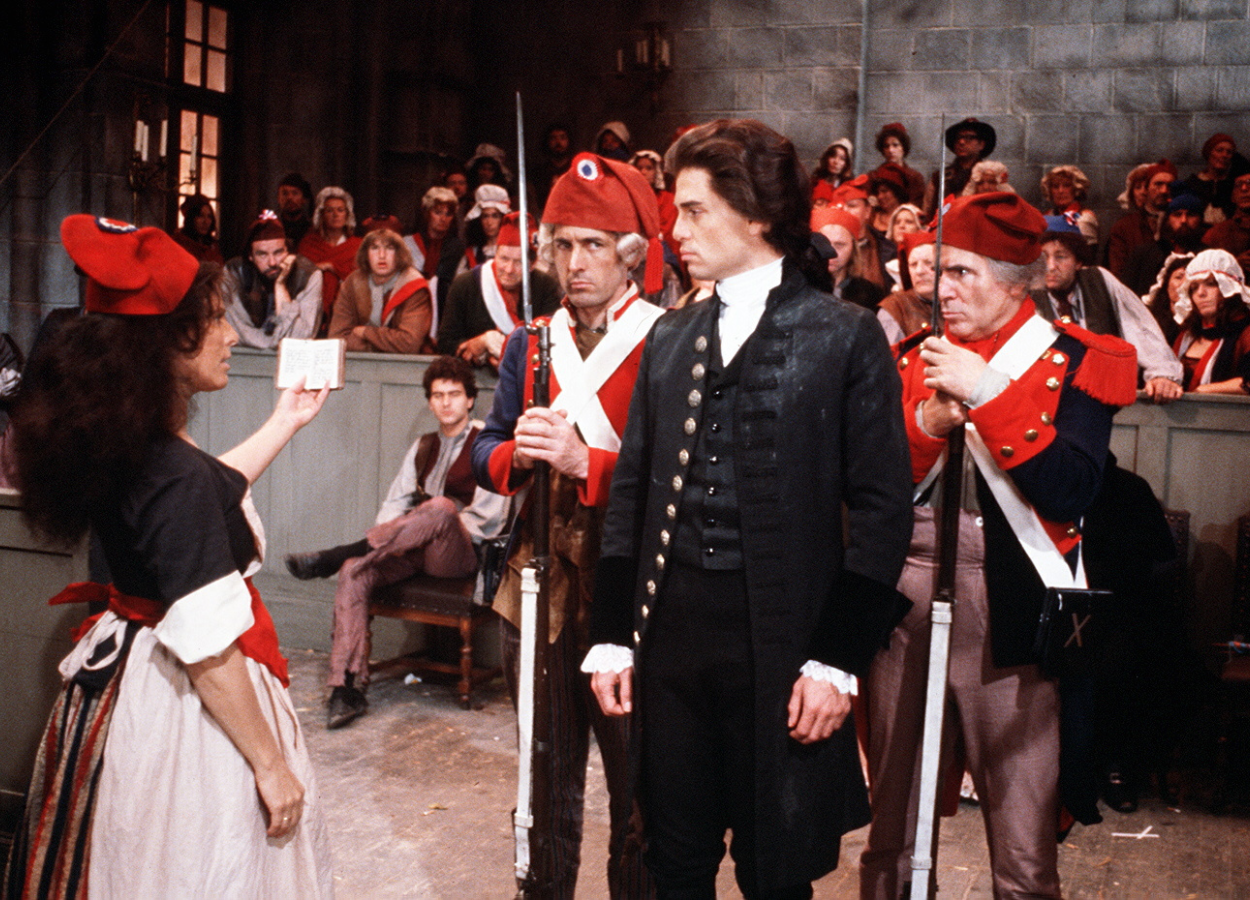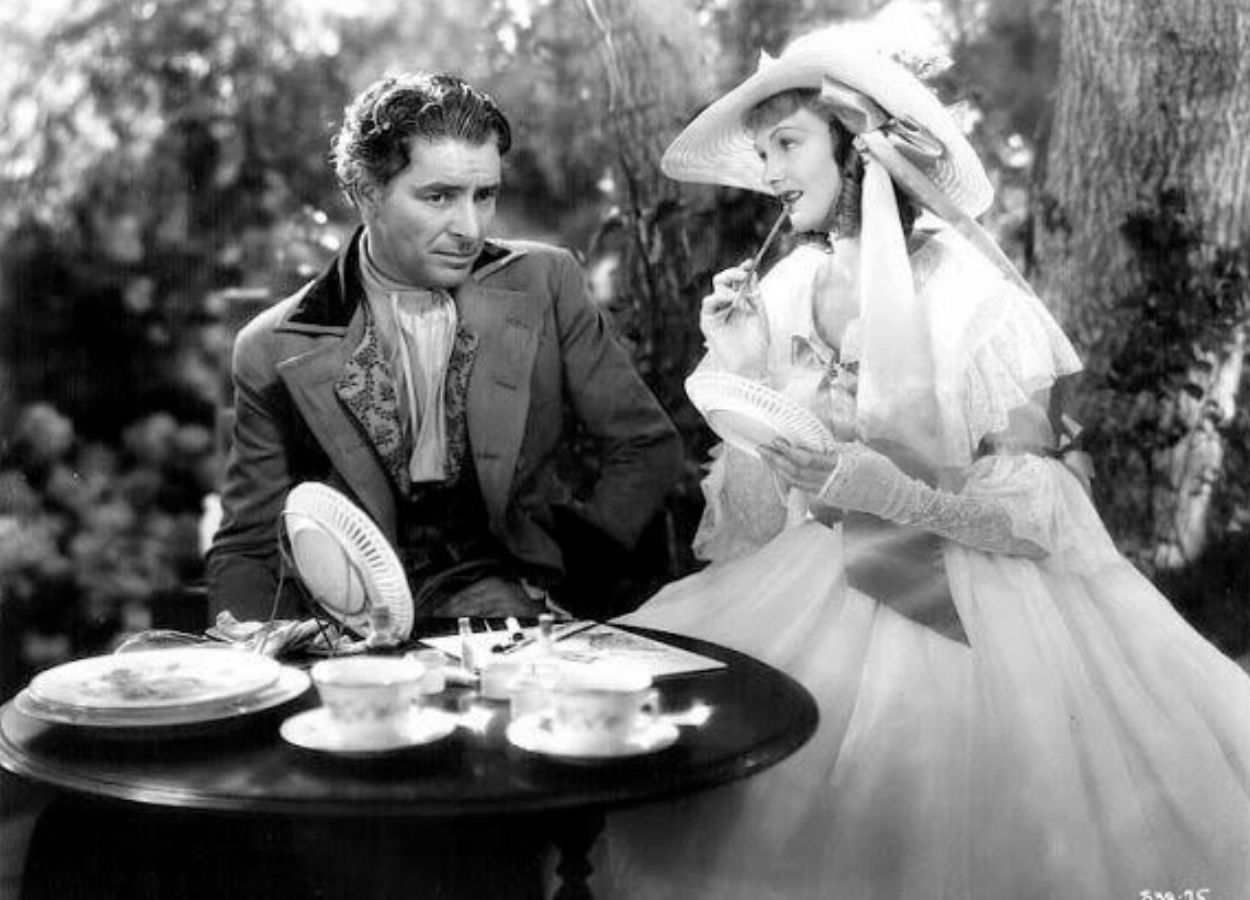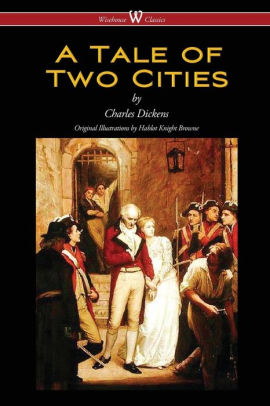Don't miss your chance to invest in 'Fabiola'!
Visit our crowd-funding page for our new production, "Fabiola"!
- Home
- The Importance Of Good Stories
- A Tale of Two Cities
A Tale of Two Cities: A Timeless Story of Sacrifice And Love During Revolution
Disclaimer: As an Amazon Associate, I receive a small commission if you purchase items on this page at no extra cost to you.
During my childhood, I loved A Tale of Two Cities and read it several times. It was only in recent years that I started watching film adaptations of this great classic discovering that while the 1935 version is touching for its romantic portrayal of Sydney Carton, the 1980 adaptation is more in keeping with the character in the book showing him as a drunken wretch.
When I was young, we owned probably around fifteen Great Illustrated Classics that I loved to read over and over. (The only one I never did read nor wish to read was The Count of Monte Cristo.) One of these abridged novels was A Tale of Two Cities.
I loved this book for its strange twist of fate that befalls when two men, looking exactly alike, fall in love with the same woman. It is, of course, "the best of times and the worst of times" with the French Revolution just getting off the ground.
I was still a child and did not understand precisely all of the politics surrounding this revolution. I did understand that some people were being killed just because of their rank and one of the characters in A Tale of Two Cities could fall into this category.
Eventually I did read an unabridged Charles Dickens novel, this time with a better understanding of the circumstances. Again, I loved the story and read it several times. It was only in more recent years that I started watching film adaptations of this great classic.
From Humperdinck to Hero: Chris Sarandon Shines in 1980’s A Tale of Two Cities
I have never been that keen on The Princess Bride. I have aunts and cousins who love the movie, know every line, and would watch it every day if they could. Despite my distaste for the film, I was rather excited when I looked at the cover for the 1980 A Tale of Two Cities and thought, "Oh my goodness! Prince Humperdinck is Charles Darnay!"
Needless to say, I was very interested to see how Chris Sarandon would be able to preform the role not only of Charles Darnay but also that of Sydney Carton. As a filmmaker, it was also interesting and almost distracting to try to figure out how the scenes were filmed as well as when a double was used instead of Chris Sarandon himself. I'm still a little perplexed at how the scene when Sydney and Charles have dinner together was filmed. I could see how to do it with the technology we have now, but am not sure if my fixes would have been possible in 1980 which is when the film was released.
For the film itself, I would say that it was remarkably complete. It has been a while since I read the book, but it seemed that the essence of the story was all there and a bit more satisfying than the old 1935 version for its constant nods to things that people who have read the book look for, such as Madam Defarge's knitting which never is referenced but always present, the concern of the apothecary for Sydney when he picks up a compound, and the doctor's occupation of making shoes in the Bastille.
I enjoyed this version substantially more than the other one I've seen. I don't know if this is because I like new things or that the film was better. Due to the subject of the film, it is a rather intense story that some children may find to be too disturbing.
From Wretch to Heartthrob: 1935’s Sydney Carton Gets a Hollywood Makeover
The 1935 version of A Tale of Two Cities is touching for its more romantic portrayal of Sydney Carton. Whereas the 1980 adaptation shows Sydney more in keeping with the character in the book of a drunken wretch, the portrayal by Ronald Colman makes viewers feel more like he perhaps should have had a better chance with Lucy.
This more charming portrayal of Sydney definitely lends a different feel to the entire story.
An interesting thing that I learned about the film was that Ronald Colman agreed to play the role only if he did not also have to play the role of Charles Darnay as well. The fact that the two men are not identical is another spin to the story and gives the character of Sydney an even more flattering portrayal as he is still able to convince the mob that he is still Charles.
Although the entire gist of the story is still there, it is a less intense film for young viewers with a more lighthearted feel overall. I also feel like the ending in this film is softer with the iconic "It is a far, far better place I go" line coming after the knife falls instead of before.
Between Two Tales: Why the Book Will Always Outshine the Movie in A Tale of Two Cities
I would always suggest reading the book to get the real A Tale of Two Cities experience. Settling for a movie can be an easy way to just get the story but there really isn't anything so magical as getting it in its truest form which is of course its original form.
Although both movies try their best, the way Charles Dickens depicts the horrible times of the French Revolution is unparalleled and so vivid that the reader can almost feel that he is living it.
One reason I like to watch film adaptations of books is because the characters in books can become a muddle in my head. Actually having a chance to put a face to a character name and getting the story in a nutshell always helps me, but novels are always way better than any film.
Getting "in the head" so to speak of the characters makes the whole story more touching. Having gone through the mental agony that Sydney has gone through the entire story makes the ending scene and most memorable line all the more worth it and leave it in your head forever:
“It is a far, far better thing I do than I have ever done; it is a far, far better rest that I go to than I have ever known.”
As a side note, I once read that Sir Walter Scott set a standard of writing historical fiction novels when he wrote the first one ever in the form of Ivanhoe. Following his example most British authors following him also made a point of writing historical fictions. So although most of his novels are set to be contemporary with his time, A Tale of Two Cities is one of the two historical fiction novels written by Charles Dickens.
Your Turn: Which A Tale of Two Cities Tells It Best on Screen?
Have you seen a version that captured the heart of Dickens’ story—or missed the mark entirely? Whether you prefer Colman’s romantic Sydney or Sarandon’s dual performance, or you have another favorite adaptation altogether, share your opinions below. Which film best brings the spirit of the novel to life—or do you think no screen version can truly do it justice?
Let’s compare notes!
Subscribe To Our FREE Email Newsletter:
Awards:
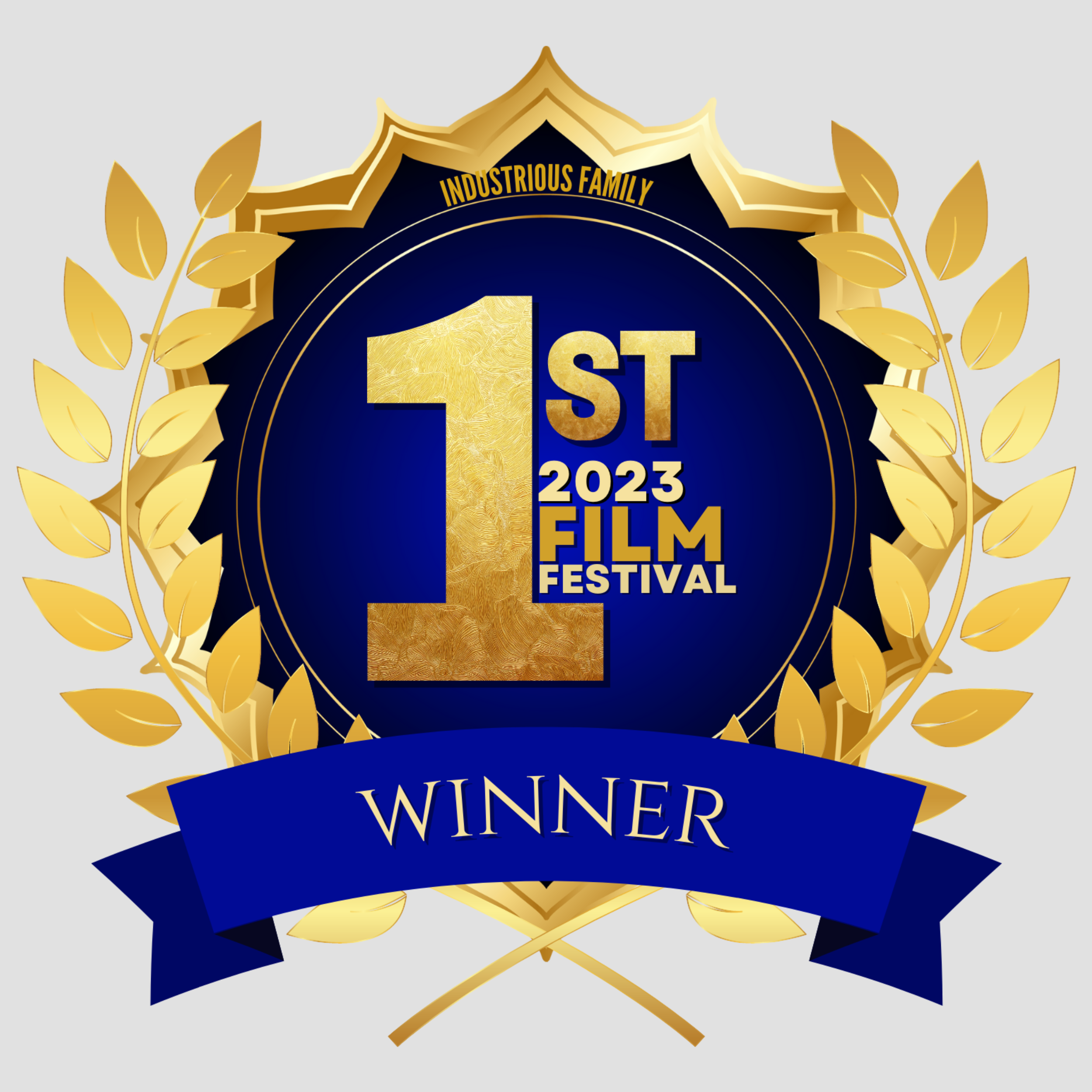
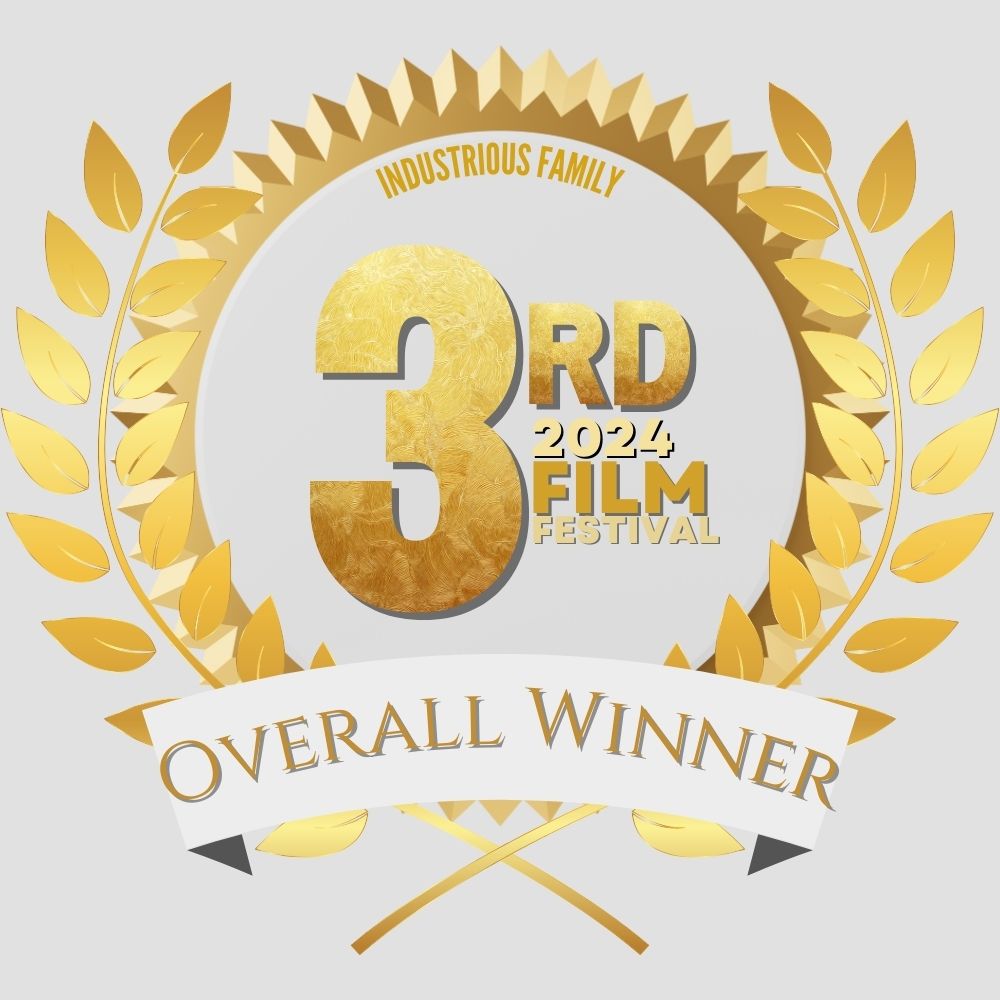
#RebuildChristianArt Blog
An aid for families encouraging the reconstruction of the social fabric by sparking interest in Christian art and culture. Find beautiful novels, films, music, food and customs.
